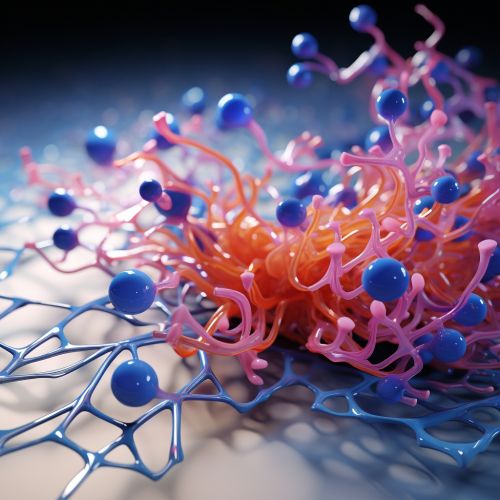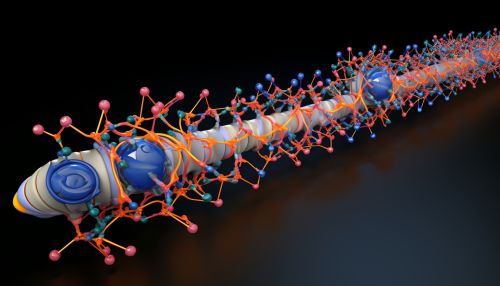G protein-coupled receptor
Introduction
G protein-coupled receptors (GPCRs) are a large family of proteins that are involved in many different physiological functions. They are the target of approximately 34% of all modern medicinal drugs. GPCRs are integral membrane proteins that possess seven transmembrane domains. Their activation is caused by an external signal in the form of a ligand binding to the receptor, which triggers an intracellular chemical response.
Structure
The structure of GPCRs is defined by an extracellular N-terminus, followed by seven transmembrane (TM) helices connected by three intracellular and three extracellular loops, respectively, and finally an intracellular C-terminus. The GPCRs interact with G proteins in the intracellular space, and this interaction induces a conformational change in the receptor.


Function
GPCRs are involved in a wide variety of physiological processes. Some examples of their physiological roles include: the senses of vision, smell and taste; the regulation of immune system activity and inflammation; the regulation of mood and behavior; and the regulation of cell growth and differentiation. GPCRs are also involved in a variety of diseases such as diabetes, asthma, depression, and certain types of cancer.
Signal Transduction
The primary function of a GPCR is to transduce extracellular signals into intracellular signals. They do this through the interaction with G proteins. When a ligand binds to a GPCR, it causes a conformational change in the GPCR. This conformational change allows the GPCR to act as a guanine nucleotide exchange factor (GEF). The GPCR can then activate an associated G protein by exchanging the GDP bound to the G protein for a GTP.
Ligand Binding and Activation
GPCRs are activated by a variety of ligands, including ions, small molecules, peptides, and large proteins. In addition, some GPCRs are activated by light (e.g., rhodopsin) or even mechanical stress. The ligand binds to the extracellular side of the receptor and induces a conformational change in the receptor, which allows it to activate a G protein.
Regulation
The activity of GPCRs is regulated by a number of factors. These include the concentration of their ligands, their location in the cell, and their interaction with other proteins. In addition, GPCRs are often regulated by phosphorylation. Phosphorylation of the receptor can increase or decrease its activity, and can also lead to the recruitment of beta-arrestins, which can desensitize the receptor and initiate receptor internalization.
Pharmacology
Due to their involvement in many diseases, GPCRs are the target of many drugs. In fact, it is estimated that about 34% of all drugs approved by the U.S. Food and Drug Administration target GPCRs. These drugs include beta blockers, antihistamines, and various types of psychiatric medications.
